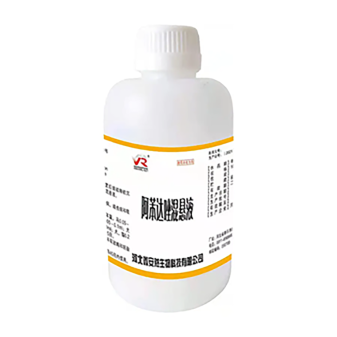- Afrikaans
- Albanian
- Amharic
- Arabic
- Armenian
- Azerbaijani
- Basque
- Belarusian
- Bengali
- Bosnian
- Bulgarian
- Catalan
- Cebuano
- Corsican
- Croatian
- Czech
- Danish
- Dutch
- English
- Esperanto
- Estonian
- Finnish
- French
- Frisian
- Galician
- Georgian
- German
- Greek
- Gujarati
- Haitian Creole
- hausa
- hawaiian
- Hebrew
- Hindi
- Miao
- Hungarian
- Icelandic
- igbo
- Indonesian
- irish
- Italian
- Japanese
- Javanese
- Kannada
- kazakh
- Khmer
- Rwandese
- Korean
- Kurdish
- Kyrgyz
- Lao
- Latin
- Latvian
- Lithuanian
- Luxembourgish
- Macedonian
- Malgashi
- Malay
- Malayalam
- Maltese
- Maori
- Marathi
- Mongolian
- Myanmar
- Nepali
- Norwegian
- Norwegian
- Occitan
- Pashto
- Persian
- Polish
- Portuguese
- Punjabi
- Romanian
- Russian
- Samoan
- Scottish Gaelic
- Serbian
- Sesotho
- Shona
- Sindhi
- Sinhala
- Slovak
- Slovenian
- Somali
- Spanish
- Sundanese
- Swahili
- Swedish
- Tagalog
- Tajik
- Tamil
- Tatar
- Telugu
- Thai
- Turkish
- Turkmen
- Ukrainian
- Urdu
- Uighur
- Uzbek
- Vietnamese
- Welsh
- Bantu
- Yiddish
- Yoruba
- Zulu
נוב . 10, 2024 23:45 Back to list
Using Glutaraldehyde Solutions for Effective Sterilization Techniques in Medical Environments
Glutaraldehyde Solution for Sterilization An Overview
Glutaraldehyde is a potent chemical compound widely used in various fields, particularly in healthcare and laboratory settings, for its effective sterilization properties. As a dialdehyde, glutaraldehyde exhibits strong antimicrobial activity against a wide range of pathogens, including bacteria, viruses, fungi, and spores. This article will delve into the properties, applications, safety concerns, and guidelines for using glutaraldehyde solutions for sterilization.
Properties of Glutaraldehyde
Glutaraldehyde is a clear, colorless liquid with a pungent odor. It has a strong disinfecting capability due to its ability to cross-link proteins, which denatures enzymes and structural proteins, thereby rendering microorganisms inactive. Typically available in concentrations ranging from 2% to 50%, the most commonly used solution for sterilization is a 2% glutaraldehyde solution. This concentration is sufficient for achieving high-level disinfection, making it a preferred choice for healthcare settings.
Applications in Sterilization
One of the primary applications of glutaraldehyde is in the sterilization of heat-sensitive medical equipment, such as endoscopes, surgical instruments, and dental equipment. Since many of these items cannot withstand high temperatures required for autoclaving, glutaraldehyde provides an effective alternative. The solution can penetrate intricate surfaces and complex shapes, ensuring thorough disinfection.
In addition to healthcare applications, glutaraldehyde is utilized in laboratories to sterilize tools and equipment that may come into contact with pathogenic microorganisms. Its effectiveness in sterilization makes it a critical agent in microbiological studies and research.
Safety Concerns
Despite its effectiveness, glutaraldehyde presents certain health risks. It is classified as an irritant, and exposure can lead to respiratory issues, skin irritation, and allergic reactions. Therefore, it is crucial to handle this chemical with care and adhere to safety protocols. Users should wear appropriate personal protective equipment (PPE), including gloves, goggles, and masks, to minimize exposure.
Moreover, glutaraldehyde must be used in well-ventilated areas to prevent the accumulation of fumes that can lead to respiratory distress
. Facilities using glutaraldehyde should also have Material Safety Data Sheets (MSDS) readily available, detailing the safe handling and response measures in case of exposure.glutaraldehyde solution for sterilization

Guidelines for Use
To ensure effective sterilization with glutaraldehyde, users should follow specific guidelines
1. Preparation of the Solution Always prepare the glutaraldehyde solution in accordance with the manufacturer’s instructions. Ensure the solution is fresh and properly diluted to maintain its efficacy.
2. Cleaning Equipment Prior to disinfection, equipment must be thoroughly cleaned to remove organic material. The presence of organic matter can impede the efficacy of glutaraldehyde.
3. Immersion Time Equipment should be immersed in the glutaraldehyde solution for the recommended time (usually at least 10 hours for sterilization). It is crucial to maintain a consistent immersion time to ensure complete disinfection.
4. Rinsing After Treatment After sterilization, equipment must be rinsed thoroughly with sterile water to remove any residual glutaraldehyde, preventing potential irritation or toxicity in patients.
5. Storage Solutions should be stored in tightly closed containers, away from light and heat, to prevent degradation. Opened solutions should be labeled clearly and used within a specified period.
Conclusion
Glutaraldehyde solution remains a valuable tool in sterilization processes across various industries. Its effectiveness against a broad spectrum of pathogens makes it essential in healthcare and laboratory environments. However, its potential health risks necessitate strict adherence to safety protocols and guidelines. By understanding the properties and correct handling of glutaraldehyde, professionals can harness its benefits while ensuring a safe working environment.
-
Guide to Oxytetracycline Injection
NewsMar.27,2025
-
Guide to Colistin Sulphate
NewsMar.27,2025
-
Gentamicin Sulfate: Uses, Price, And Key Information
NewsMar.27,2025
-
Enrofloxacin Injection: Uses, Price, And Supplier Information
NewsMar.27,2025
-
Dexamethasone Sodium Phosphate Injection: Uses, Price, And Key Information
NewsMar.27,2025
-
Albendazole Tablet: Uses, Dosage, Cost, And Key Information
NewsMar.27,2025













